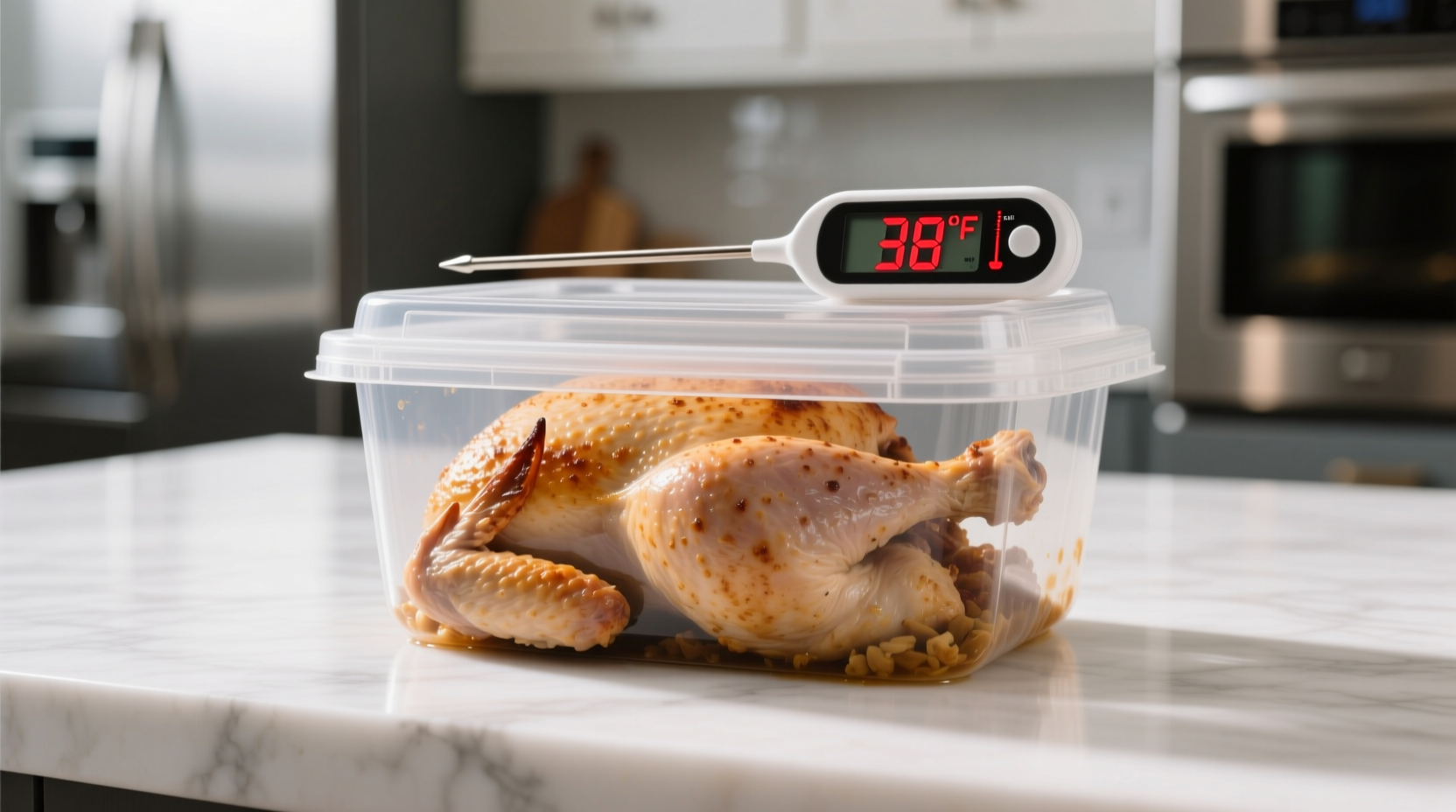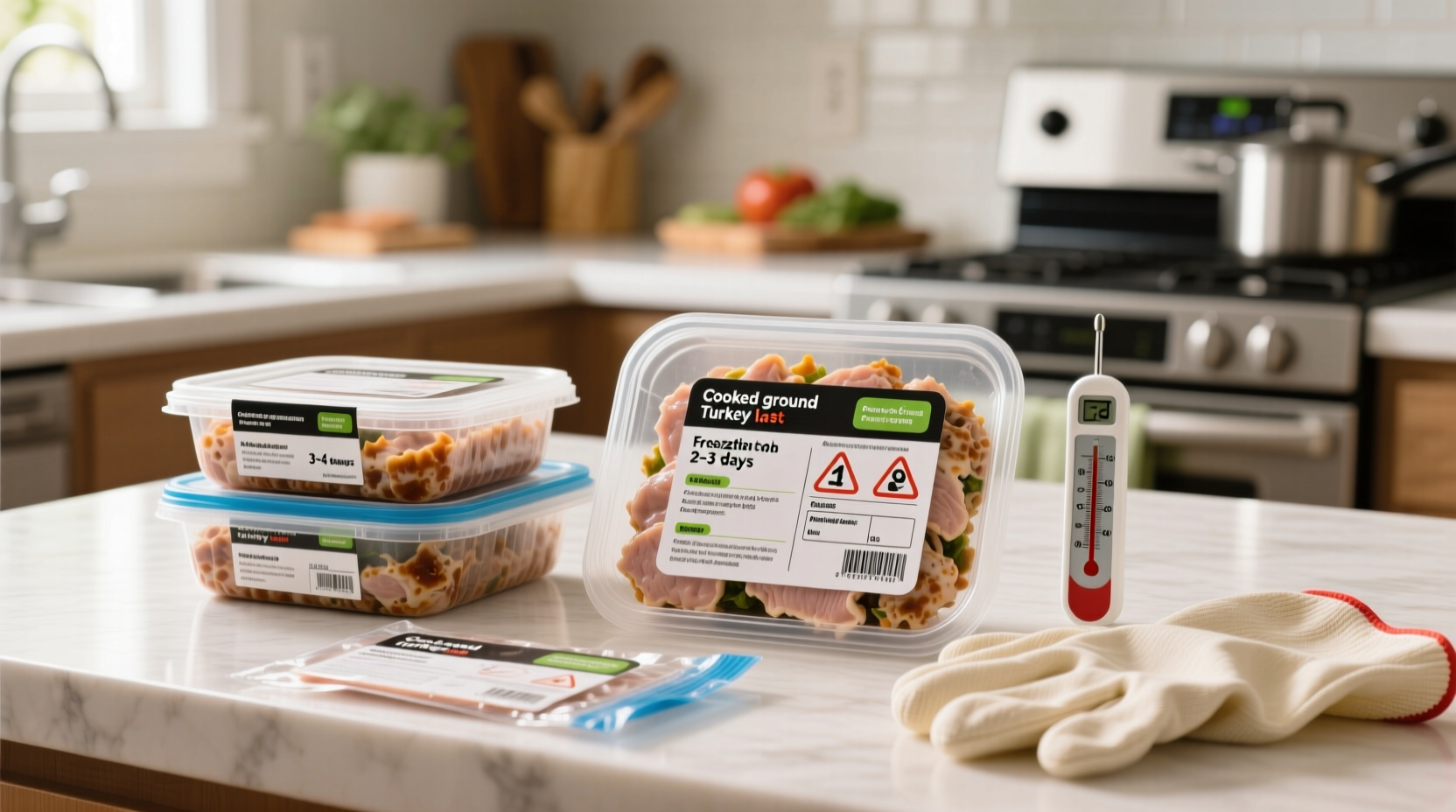Cooked ground turkey stays safe to eat for 3–4 days when properly stored in the refrigerator (at or below 40°F). For longer preservation, freeze it within 2 hours of cooking to maintain quality for 2–6 months. Always reheat to 165°F internal temperature to eliminate potential bacteria.
Wondering if that leftover turkey chili from Tuesday is still safe for lunch? You're not alone. Each year, 1 in 6 Americans experiences foodborne illness, often from improperly stored leftovers. Getting ground turkey storage right matters more than you might think—this lean protein spoils faster than many realize due to its high surface area and low fat content.
Why Ground Turkey Has Shorter Shelf Life Than You Expect
Unlike whole cuts, ground turkey's texture creates more surface area for bacteria to grow. The USDA explains that ground meats enter the "temperature danger zone" (40°F–140°F) more rapidly during cooking and cooling. This scientific reality means your meal prep timeline needs tighter control than with steak or roast.
| Storage Method | Maximum Safe Duration | Critical Temperature Requirement |
|---|---|---|
| Refrigerator (freshly cooked) | 3–4 days | ≤40°F throughout storage |
| Freezer (properly packaged) | 4–6 months | 0°F or lower |
| Room temperature | 2 hours max | Discard if >2 hours at room temp |
Step-by-Step Cooling Process That Preserves Quality
How you cool leftovers determines whether you get 4 days or just 2. Follow this professional kitchen protocol:
- Divide immediately: Transfer cooked turkey to shallow containers (no deeper than 2 inches) within 2 hours of cooking
- Avoid the "warm center" trap: Stir frequently while cooling to dissipate heat evenly
- Use ice baths for large batches: Place container in ice water, stirring until internal temperature drops below 70°F
- Seal properly: Use airtight containers with minimal air space to prevent freezer burn
According to FDA Food Code guidelines, reducing the cooling time from 4 hours to 2 hours decreases bacterial growth by up to 90%. This isn't just theory—it's the difference between safe leftovers and food poisoning.

Spotting Spoilage: Beyond the "Sniff Test" Myth
That common advice to "smell it first" fails 30% of the time according to CDC research. Bacteria like Clostridium perfringens produce no odor but cause violent illness. Check these reliable indicators instead:
- Color shift: Grayish hue or green spots (not just surface browning)
- Texture change: Slimy film that doesn't wash off
- Container evidence: Cloudy liquid or pressure bulges in sealed containers
- Time expiration: Automatic discard after 4 days regardless of appearance
Freezer Storage That Maintains Flavor and Safety
When freezing cooked ground turkey, most home cooks make these critical errors:
- Using regular plastic containers (causes freezer burn in 2 weeks)
- Not labeling with dates (leads to "mystery meat" syndrome)
- Freezing in large clumps (thawing unevenly creates danger zones)
For optimal results, portion into 1-cup servings using vacuum-sealed bags or rigid freezer containers with 1/2 inch headspace. The USDA National Institute of Food and Agriculture confirms this method preserves quality for 6 months versus 2 months with improper packaging.
Reheating Without Drying Out or Creating Danger Zones
Many foodborne illness cases come from improper reheating. Follow these chef-tested methods:
- Stovetop revival: Add 2 tablespoons broth per cup while heating on medium-low
- Thermometer verification: Insert into thickest part—must read 165°F
- No partial reheating: Reheat only what you'll consume immediately
University of Minnesota Extension research shows that reheating ground turkey to just 140°F leaves 15% of common pathogens viable, while 165°F achieves complete elimination. That extra 25 degrees makes all the difference.
Meal Prep Timeline for Maximum Safety
Planning weekly meals? This evidence-based schedule prevents waste while ensuring safety:
- Day 0: Cook and cool within 2 hours
- Day 1–2: Use in tacos, casseroles, or pasta sauces
- Day 3: Freeze portions you won't use within 24 hours
- Day 30+: Thaw overnight in refrigerator before use
This approach aligns with USDA storage recommendations while minimizing food waste—the average household throws away $1,500 yearly in edible food.
When Leftovers Become a Health Risk
Symptoms of foodborne illness from spoiled ground turkey typically appear 6–24 hours after consumption and include:
- Severe abdominal cramps
- Watery or bloody diarrhea
- Vomiting and fever
The CDC reports that Salmonella from poultry causes 1.35 million illnesses annually in the US. When in doubt about storage duration, follow the food safety maxim: "When uncertain, throw it out." Your digestive system will thank you.











 浙公网安备
33010002000092号
浙公网安备
33010002000092号 浙B2-20120091-4
浙B2-20120091-4